
views
Creating a Plan

Identify the purpose of the farm. The land you need will differ depending on what crops you want to grow or what livestock you want to raise. Take some time to carefully consider what kind of farm you plan to run. What do you intend to do with the land? What crops or animals does the land need to support? What kind of buildings, fencing, equipment, and irrigation will you need? Knowing the purpose of the farm will help you target exactly what kind of land you’ll need.
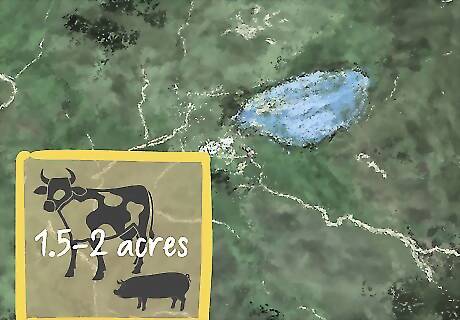
Determine how much land you’ll need. If you plan to grow crops, think about what kinds and how many acres you’d need for each. Similarly, if you plan to raise animals, decide what kind, how many you’ll have, and how much land you’ll need to support them. Keep these figures in mind when viewing properties, and avoid visiting locations that can’t support the type of farm you plan to run. For instance, if you plan to raise cattle, you’ll need 1.5 to 2 acres per head.
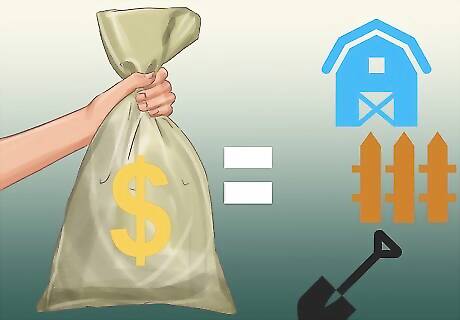
Set a realistic budget. Factor in the cost of the land, property taxes, upkeep, and maintenance. You may also need to add buildings (like barns or stables), fencing, and irrigation or purchase equipment and make other upgrades. Estimate your income from running the farm, taking into account crop or meat prices, to help you determine how much financing you may need to get the farm running.

Work with a certified realtor. To find a certified realtor in your area, visit https://www.realtor.com/. A realtor will have tons of information that can help you make an informed decision. Plus, they are paid by the seller, so there is no up-front cost to you. Realtors can help you navigate the offer, appraisal, and closing and ensure you understand all parts of the transaction. Choose a certified realtor who has experience with rural properties and farmland in the area you plan to make a purchase.

Choose a location in which to purchase the land. It’s a good idea to have a general location in which you wish to purchase the land. Consider the average weather conditions for the area and find out if it is prone to natural disasters, like fires, tornadoes, or floods. Find out the average property values and taxes for the area and determine if you’ll be close enough to work, school, grocery stores, medical offices, and the like.

Contact the county courthouse to ensure the area is zoned for farmland. Once you have determined where you would like to own farmland, you’ll need to identify the zoning regulations for that specific county. Contact or visit the county courthouse where the property is located and ask if the land is zoned for farming. If it’s not, you’ll need to search for land in another county.
Selecting Property
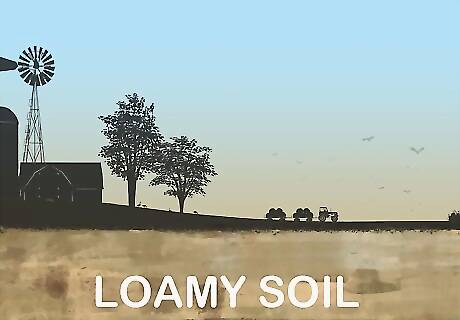
Purchase a farm with loam soil if you plan to grow crops. It’s imperative that you know the soil composition before purchasing farmland. Ask the seller for a recent soil test, and if they haven’t had one done, arrange for a laboratory to analyze the soil content. Loam is an ideal soil type for farmers as it holds water well. Clay holds too much water, and sand doesn’t hold enough water, so these soil types would need to be amended.

Look for high-quality pasture grass if you plan to raise livestock. Consider the forage type when buying farmland—western wheatgrass, blue maidencane, giant cane, switch cane, green silkyscale, and many varieties of bluestem are suitable forage for cattle, horses, sheep, and goats. Find out how much of the land is grazeable, and how much is not. Look for less than 30% rock cover to ensure your livestock will have enough forage available.
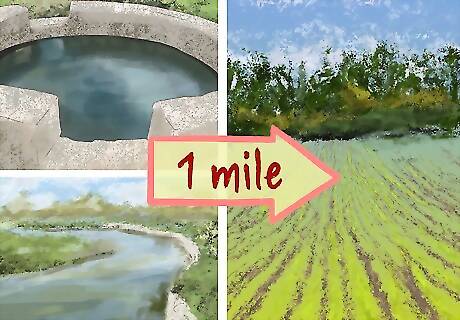
Evaluate the irrigation and drainage capabilities of the land. Ask the seller or realtor what kind of irrigation and drainage systems are in place. Look for access to a high-quality water source, such as a well or river for crop irrigation or watering livestock within 1 mile (1.6 km). You should also find out how much erosion damage the land has. Inspect the ditches to see if they are clean and find out if they are able to handle the average amount of precipitation.

Ask about the field history. Field history refers to what kinds of crops have been grown as well as what kinds of herbicides have been applied to the land. If you plan to raise livestock on the farm, ensure that the herbicides used in the past won’t affect the animals. Though most herbicides are safe to use on forage, you should still do an Internet search to find out if there are any grazing restrictions for the particular kind of herbicide used. If you plan to grow a certain crop, make sure it will work well together with what has previously been grown based on which nutrients the plants use the most. For instance, if beans were last planted on a plot, tomatoes would do well in the area but lentils would not.

Inspect the facilities and infrastructure for damage. Take a close look at the fencing, buildings, pastures, lakes, ponds, wells, and roadways of the property. Determine if they are in good repair or if they will need fixed or upgraded. You should also evaluate whether the existing facilities, plumbing, and electricity will meet your needs or if you’ll need to add new infrastructure.

Determine ownership of the gas, mineral, and wind rights. Find out if the rights to gas, minerals, and wind have been severed from the surface rights of the property. The seller and/or realtor should be able to answer any questions you have about property rights. Ideally, gas, mineral, and wind rights should transfer to you as the buyer, but this isn’t always the case. If the rights are already leased out, go over the terms of the contract with a lawyer to ensure you are happy with the agreement.
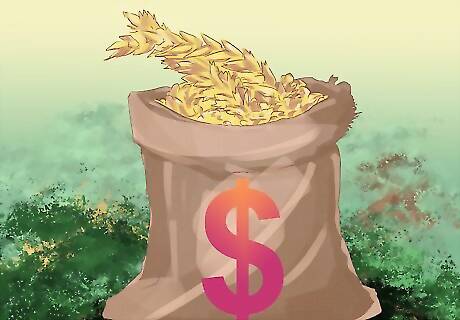
Find out how much revenue the farm is making. The most important factor when evaluating farmland is the amount of revenue the farm is making. Chances are, if the farm isn’t making money now, it won’t make money for you in the future. Visit the nearest farm service agency (FSA) office to learn more about the farm’s revenue. You’ll be able to view past records for the property.

Get the property professionally inspected and appraised. Though you’ll have to pay to have this done, it’s an essential step to protecting yourself as the buyer. The property, facilities, and infrastructure should be inspected and appraised by professionals so you can make an educated decision about the value of the property. They’ll let you know if there are any issues with both the land and the facilities. Appraisals generally cost between $300 to $400, while inspections usually cost between $200 to $400, depending on the location and amount of land.
Finding Funding and Purchasing the Property
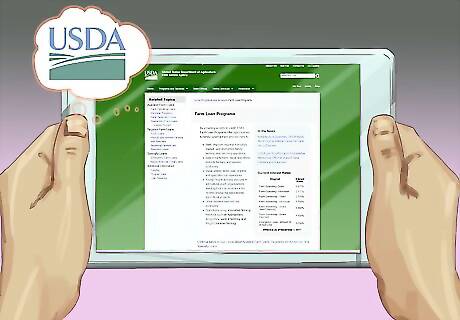
Find out if you’re eligible for government farm loan program. The FSA provides farm loans to family-sized farms throughout the United States. There are a variety of loans available, such as for micro farms, young farmers, Native American tribes, new farmers, emergencies, or minority and women farmers. To find out more information and to apply for one of these loan programs, visit https://www.fsa.usda.gov/programs-and-services/farm-loan-programs/.

Meet with a rural property lender if you need financing. If you don’t qualify for a government loan, you can get a private loan. Though big-city banks can assist you with plenty of transactions, it’s best to speak with a rural property lender when buying farmland. They will be familiar with the specific intricacies regarding loans for farmland.

Make a fair offer on the property you wish you purchase. Once your money or funding is secure, you can put in an offer on the property you wish to buy. It’s best to start with a low—but fair—offer, such as 10% below the highest amount you’d be willing to pay, to leave room for negotiation. Your realtor can help advise you further and make the offer to the buyers.

Negotiate the price and terms of the contract. The buyer may accept your offer or ask for more money. Your realtor can work with both of you until an agreement is made. Then, a contract will be drawn up and a lawyer and/or realtor can help explain the terms of the contract to you, if necessary. Now is the time to make amendments or ask for upgrades! Once you sign the contract, you’ll need to put down earnest money until the deal is closed.
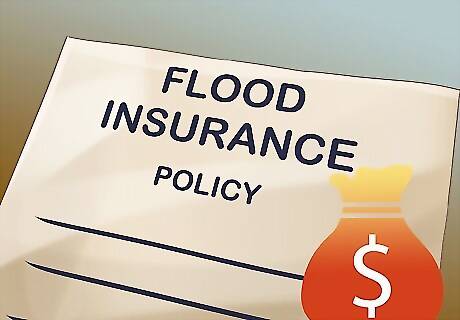
Invest in title and flood insurance, if applicable. To protect your investment, you may want to purchase both title and flood insurance. Title insurance guarantees your right to the property at the closing price and will also let you know if the area has been used for hazardous waste dumping. If the property is in a flood zone, you’ll be required to purchase flood insurance before closing on the property to protect yourself from losses due to flooding.

Finalize the deal to take ownership of the property. Once both parties are happy with the contract, you can close on the property. Usually, you’ll need to meet the realtor and seller at the title company to close. The deed will be transferred to your name, and any keys to the gates or buildings will be handed over. You’ll be expected to provide the remainder of the money for the property at this time, usually by means of a certified check.




















Comments
0 comment